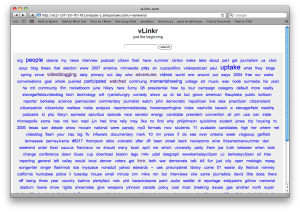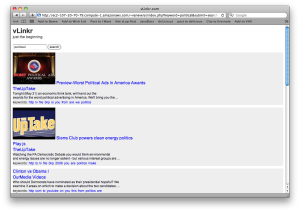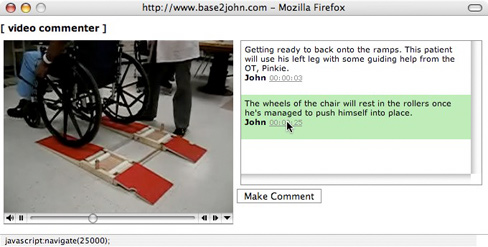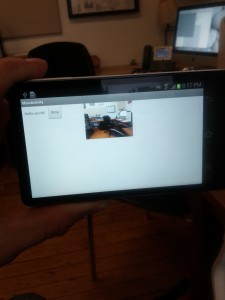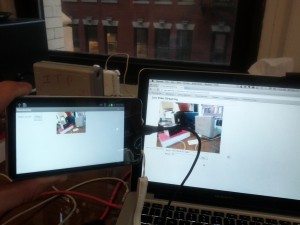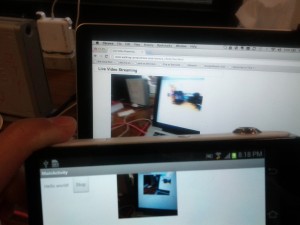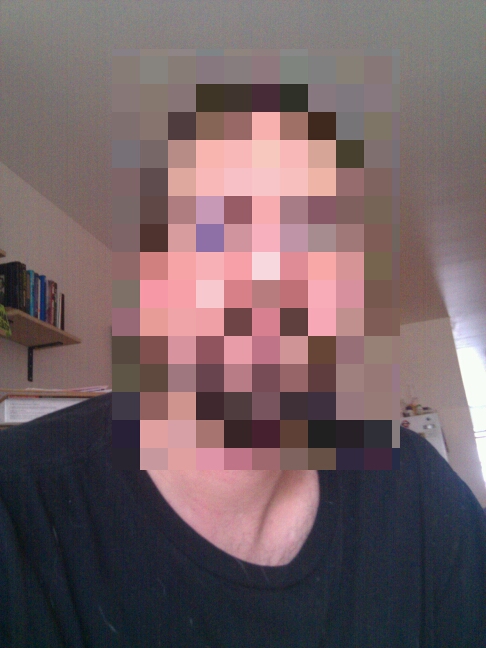In 2007 and 2008, I worked on a project called vLinkr. What follows is a write-up of the initial idea and a few screen caps from the prototype.
vLinkr.com
vLinkr’s mission is to enable online media publishers abilities on-par with YouTube and Brightcove while hosting media on their own server on their own terms.
To this end, vLinkr is developing a suite of open source audio and video publishing tools that integrate with popular open source content management systems (initially WordPress and Drupal). Since these tools will be open source, it is hoped that others will help to improve and extend these tools in both functionality and platform reach.
Serious yet small media publishers are under-served by video sharing sites along the lines of YouTube. YouTube in particular is geared towards lower quality, extremely short, often copyright infringing media. Many of these sites follow suit and furthermore retain rights to re-use the media which can be problematic.
On the other side of the spectrum exist companies such as Brightcove whose products are geared towards high end media producers. These tools offer significantly more functionality in the management and control the publishing of online media that larger media companies require. Unfortunately, these tools and services involve significant cost that is often beyond the reach of small media publishers. Also, these tools are often not on the forefront of available technical and social capabilities, rather focusing on generating additional revenue for existing media assets.
vLinkr’s suite of tools seeks to offer a no-compromise solution that is both packaged and open source. (Support and professional services may well enter into this mix.)
Along with the features offered by social media sites (sharing, cross-posting, podcasting, transcoding, ad insertion and commenting) vLinkr seeks to help invent a new type of online media involving audio and video.
The features that currently exist on social media sites can be thought of as retrofits of existing “Web 2.0” technologies onto audio and video content. Unfortunately, these features surround the content rather than integrate with the content. A large part of vLinkr’s mission will be to prototype and release technology that seeks to crack open audio and video and help to make it parse-able, internally searchable and generally more internet like than television/radio like. vLinkr seeks to make audio and video on the internet more than just audio and video on the internet.
One issue with the type of distributed media publishing that vLinkr seeks to support (as opposed to aggregated publishing such as occurs on sites like YouTube) is that the media and is not indexed as well which can make it less “findable”.
This leads to the second portion of vLinkr’s service which is a centralized media data aggregation service. Using existing content syndication and content update infrastructure (RSS and pingback), this service will index most major online media publishing sites along with any individual media site that someone wishes to be added. Additionally, it will leverage the enhanced capabilities of the vLinkr publishing tools increasing the available metadata (audience viewing behavior, comment indexing and so on). These enhanced capabilities will attempt to be standardized so that other developers of publishing tools may generate this enhanced metadata and submit this enhanced metadata as well.
This data aggregation service while offering search and browse capabilities is not intended to be a destination or gateway site, rather it will be primarily used to offer a second set of tools that a media publisher may use on their site to offer search and related content. This will bring the capabilities available more in-line with those offered on existing social media sites and making distributed media more “findable”.
vLinkr believes that competitors in this space (Google Video, Blinkx, MeFeedia, Yahoo Video and so on) make the mistake of bringing the indexed content into their site. vLinkr believes this is somewhat unethical and may be considered copyright infringement. vLinkr, on the other hand will not display the media rather it will just index and link to it therefore helping those using vLinkr tools (and compatible tools) make their media more relevant and findable.
The centralized vLinkr service will have significantly lower infrastructure needs than it’s competitors and will be able to move quickly towards enhanced capabilities not having to house and transcode the media itself.
In terms of capital generation, this data in aggregated form may be sold to advertisers, marketers, media researchers and other interested parties. It may also be used to help target ad placements in content generated by vLinkr users should those users decide to allow advertising.
Any and all feedback or inquiries are encouraged and appreciated.
